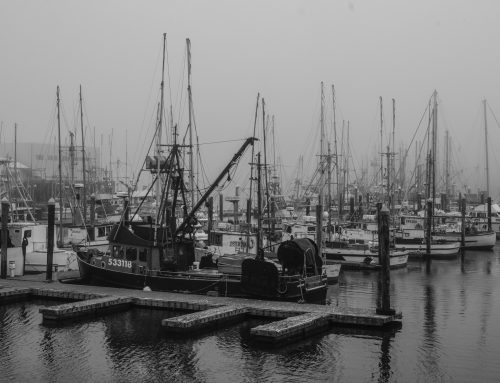Jack Graham Photography Workshops: www.jackgrahamphoto.com/photo-workshops 2011 & 2012 schedule available . 2011 space limited.
One on One workshop information: https://www.jackgrahamphoto.com/one-one-field-studio-photography-workshops
2012 Ultimate Iceland—filling fast !! https://www.jackgrahamphoto.com/ultimate-iceland
2012 Hidden China and optional Tibet .. limited availability http://www.phototc.com/tours/tour.php?tour=152
PODCAST : www.18percentgraymatter.com ( also available on iTunes)
___________________________________
FEATURED ESSAY: SEE the LIGHT !
Images and Text © Jack Graham and Jack Graham Photography LLC
“Light makes photography. Embrace light. Admire it. Love it. But above all, know light. Know it for all you are worth, and you will know the key to photography”……George Eastman
There’s an old song called “I’m beginning to see the light”. Successful photographers have literally learned to see the light, in order to produce quality images.
Weather you are a landscape photographer, bird photographer, and macro photographer etc, we all depend on the light. Weather you are photographing portraits indoors or the widest landscape outdoors we all depend on light. This is nothing new. However, learning to see the light in a proper fashion can separate you from the pack.
Easy right? Well not all that easy. It too me many years to develop the sense and intuition to see light. Often, finding a good subject is easier than finding good light. As my many workshop attendees can vouch for, I am a great believer in what I refer to as “The John Shaw questions”. These were introduced to me at a relatively early stage of my photographic career by John Shaw and though I don’t consciously repeat them every time out, they are always primary in my mind. Is there a good subject? And.. Is the light good?
This essay is about seeing light. Just being in the right place in the right time doesn’t guarantee you’ll see the light. Getting up two hours before sunrise and arriving an hour before sunrise does not guarantee a good photograph, unless you know how to see the light.
It’s the light that makes rocks, water, sand, trees etc. look the way they can. For example, light can make sand look smooth or very rough. It’s the light that makes the texture, color backgrounds and the shape of subjects look the way they do. The way you want a photograph to eventually look is totally dependent on the light.
“I almost never set out to photograph a landscape, nor do I think of my camera as a means of recording a mountain or an animal unless I absolutely need a ‘record shot’. My first thought is always of light”.…..Galen Rowell
Types of Light
Front light: is what most photographers look for. Low angle front lighting can bring out warmth and definition of subjects. Front lighting can eliminate shadows (sometimes though, we need a shadow to represent the way things might really look in the scene don’t be quick to dismiss shadows. In our new HDR world, please don’t overlook shadows. Using shadows is an essay unto itself. I think we are probably all familiar with front lighting.
Low, diffused lighting: If a subject functions as color, this lighting is primary. Flat, diffused light is most used in macro photography, though if the subject is translucent, you might look for a nice back light effect to bring out elements not seen when front lit.
Back lighting: The effects of back lighting is very underestimated and not used enough by nature photographers. Back lighting a subject can really bring out the shape of a subject exceedingly well. . It can serve to accentuate the areas not seen by the other forms of light.
 Sidelight: Most often used to bring out textures and definition
Sidelight: Most often used to bring out textures and definition
It is imperative to consider the light and how you want to use it when composing your image, as the light has the major impact on the subject. Don’t just take the subject into effect, because the light can make or break your photograph, even if the subject matter is dynamic. When composing an image ask yourself how can you best use the light. You may need to adjust your location or get lower or higher to get the most out of the light. This is another reason to walk around before committing to a specify location to make the photograph.
Trees, for example can have a totally different look when side lit. Light can alter the texture, color and add to the wow factor depending on where you decide to take your photograph. Experiment. If the light brings out parts of the subject that detracts from the image then you need to move, and adjust the light. If you can not remove the detractions, then maybe it’s better to move on to another subject. Assuming you have a good subject, the amount of light and how you use the light is the key to a successful image.
So now that you have found a great subject, you need to determine the way you want to use the available light. It’s now time to tackle the proper way to expose your image. Again there care variables to consider.
How we see the subject (image) is different from the way the camera see the image. Quickly, our pupils adjust to pick up nuances, colors and details that are before us. Cameras do not react like our pupils. We have to adjust the settings (exposure) on our cameras to accentuate the areas we want to bring out I order to tell the story of the image. A dramatic sunrise or sunset can be much more difficult, than a diffused plant on an overcast day.
Often, without adjusting or fine tuning the exposure that our cameras suggest that we use (via their internal metering systems) the entire image will be rendered the same. We have to take into effect the way we want the image to look. Take into account the color, the texture and shape of the subject and the accompanying elements to make the image complete and pleasing to the viewer.
The shape of the subject is the least affected by light. Texture is a bit more affected. Color is the most affected by the light (remember the 4 types of light from earlier in this essay). Back in the film days we knew that black was 2 stops below middle tone gray. Other colors require exposures above or below middle gray. We had to know this and adjust for it. Though today’s cameras have histograms that can tell us how colors are working within our cameras, we still have to think like film in order to expose properly to use the light, the way we want. Histograms give us instant verification on the exposure. How dark or how light you want a shadow is controlled by your exposure and your histogram can be a way to make sure you have exposed the image correctly. In general colors remain constant with 1/3 to ½ of the optimum exposure.
Exposing – 1/3 stop can often accentuate color as well as texture. By using the proper exposures, we can try and make our cameras work as close to our eyes as possible.
Using the knowledge of light and exposure allow for quality images. It takes some practice and control, but seeing the light is absolutely essential in the success of a photograph.











